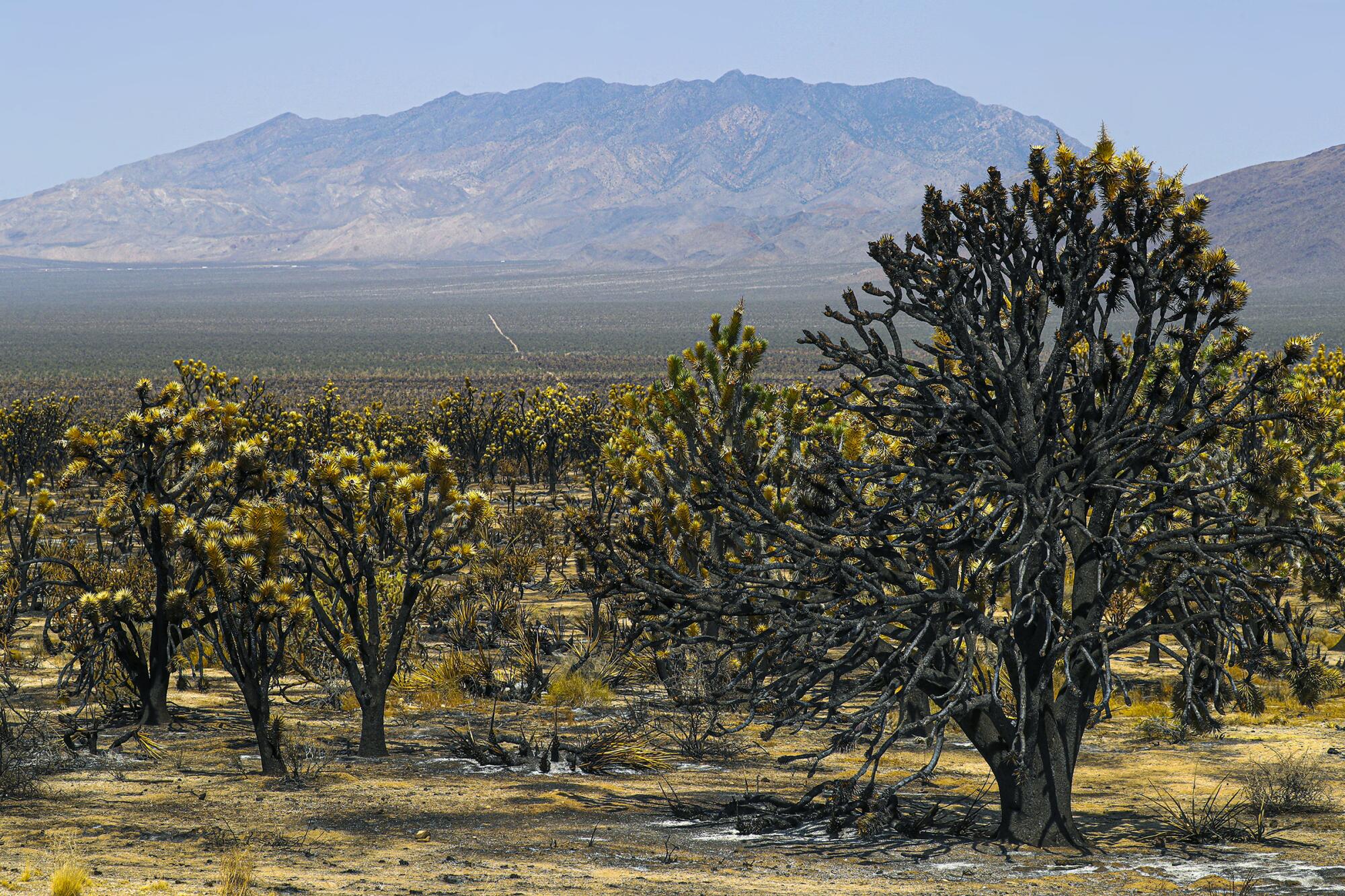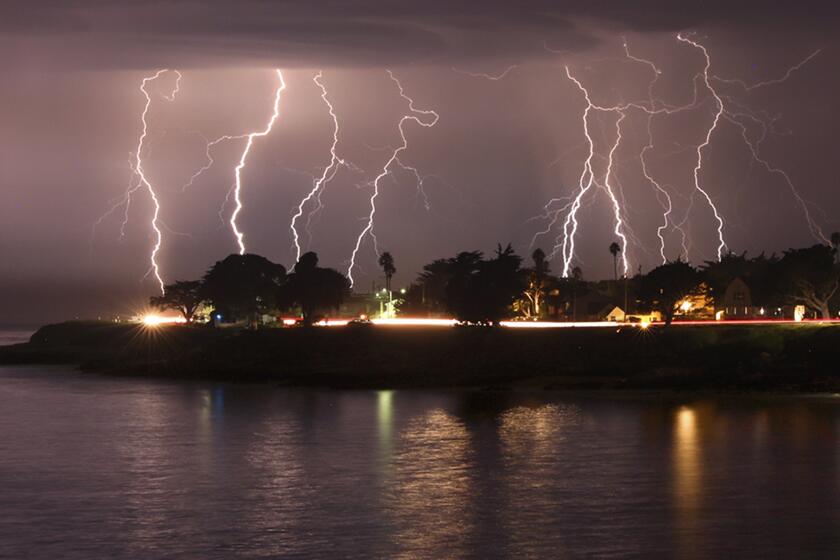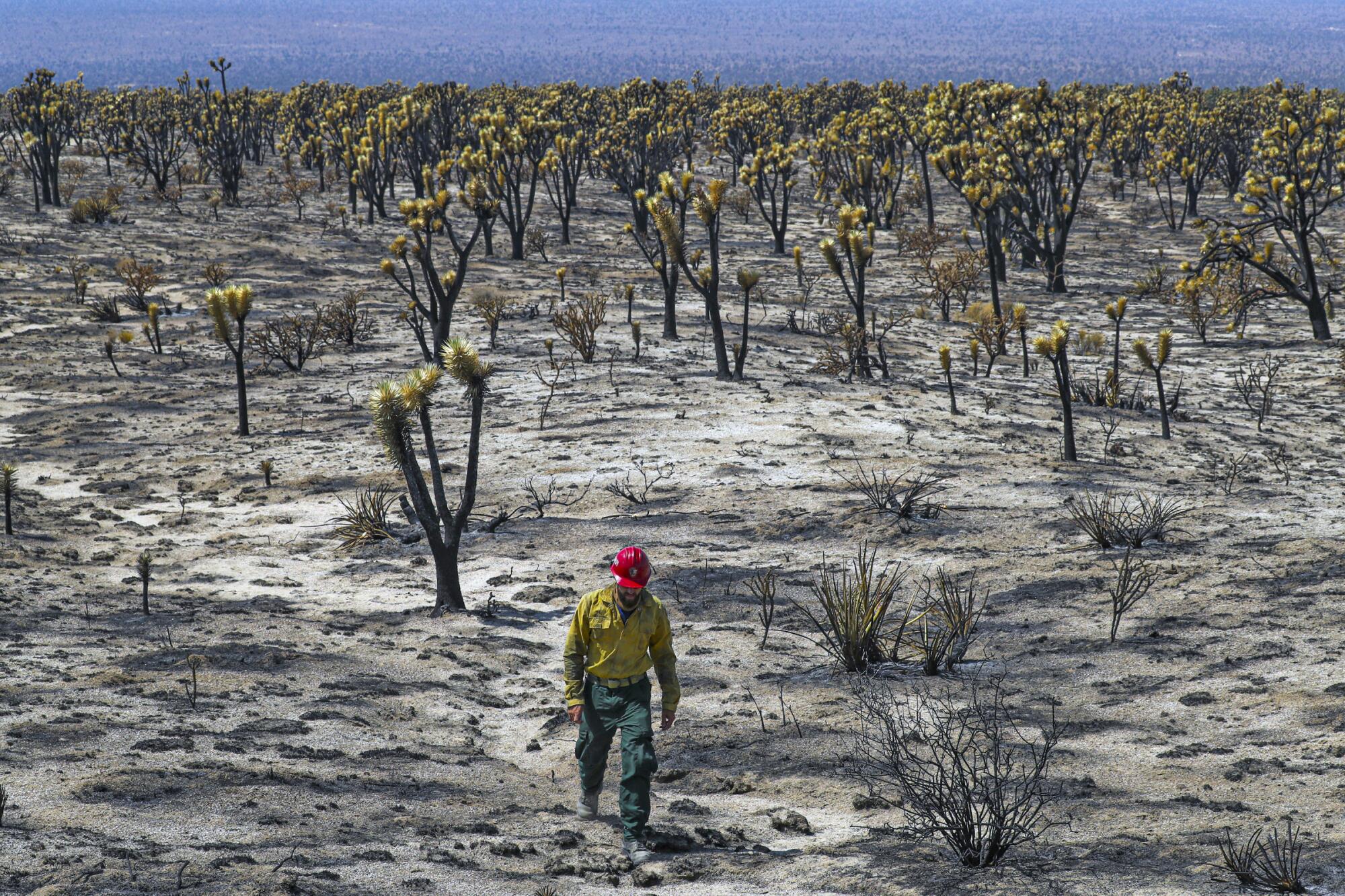
The first day of Californiaâs lightning siege, thunderstorms rolled across the Mojave National Preserve, slicing the afternoon sky with dry strikes.
Smoke rose from the top of Cima Dome, marking the start of a wildfire that would ravage the heart of one of the worldâs largest Joshua tree forests.
A drive down Cima Road that only weeks ago was a trip through a magical landscape is now a tour of the worldâs biggest Joshua tree graveyard.
Most of the charred trees are still standing. In the evening light, their leaves, bleached with scorch, take on an eerie beauty. But they are doomed, and the 43,273 acres of the Dome fire are forever transformed.
âThat stand with that many big trees was developing for thousands of years,â said Todd Esque, a U.S. Geological Survey research ecologist who has studied the forest. âWe wonât replace that.â
The Aug. 15 Dome fire was not a surprise. In 2005, roughly 1 million acres of the Mojave burned, including part of the preserve to the southeast of Cima Dome.
âWe were expecting this to happen. Weâve been talking about this for years,â said Debra Hughson, the preserveâs science and resource chief.
Fire has emerged as the top threat to the Mojave in recent decades. The relentless spread of invasive grasses across the desert is making it more flammable, increasing the number and size of wildfires in ecosystems that rarely burned and are ill-adapted to survive flames.
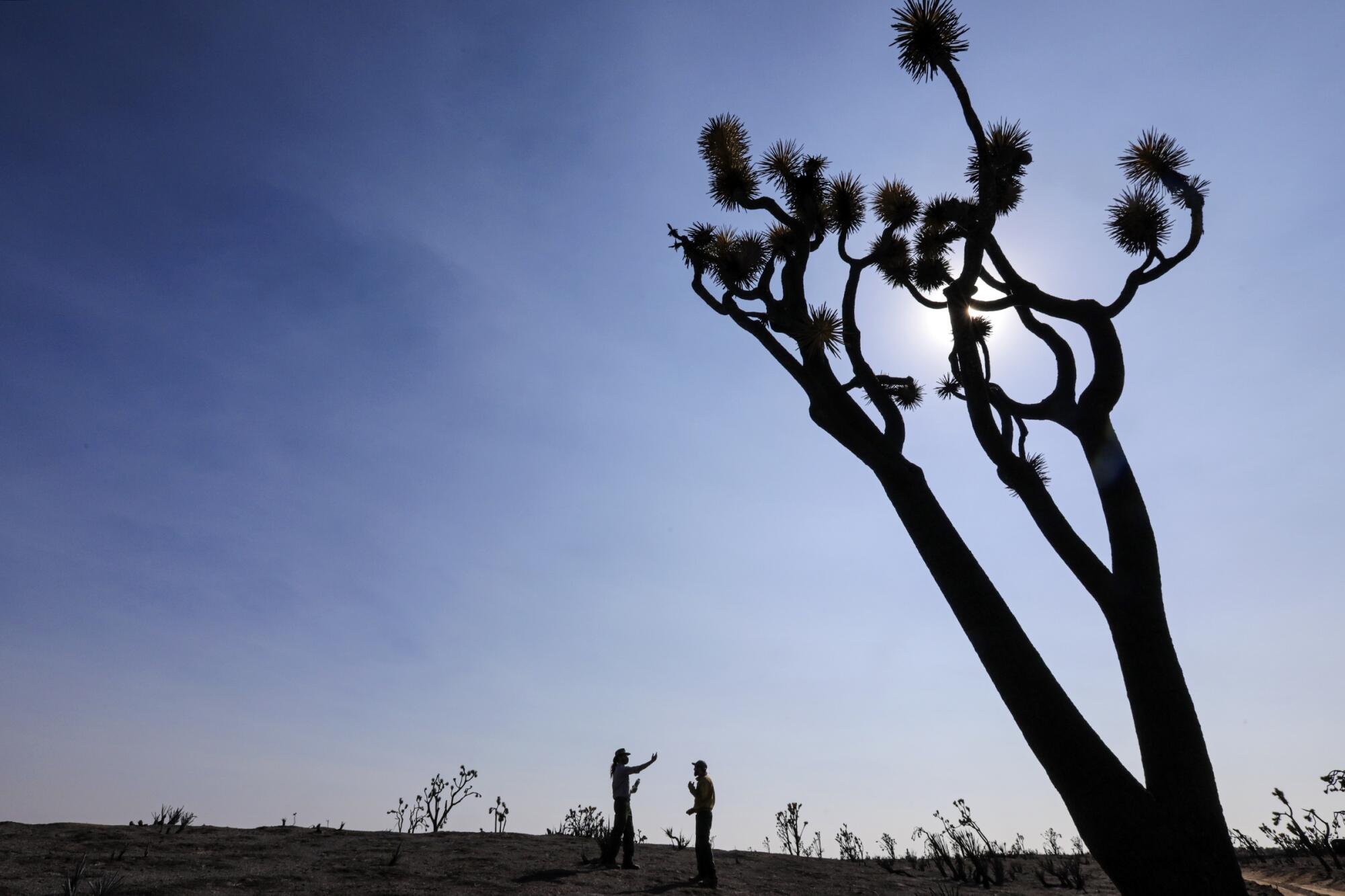
When preserve fire captain J.T. Sohr and a handful of engine crews reached the source of smoke rising above Cima Dome that Saturday afternoon, winds were pushing the roughly 70-acre blaze in all directions.
The temperature was in the mid-90s â hot for the domeâs 5,000-foot elevation. Relative humidity was in the mid-teens. The summer monsoon season, which normally delivers about half the areaâs rainfall, had been a bust. Vegetation was dry.
The fire chewed into wilderness areas that firefighters couldnât reach. A little more help arrived Saturday evening. But with lightning fires erupting all over California, Sohrâs initial requests for additional support went unfilled. He pulled back the small band of 16 firefighters and they bedded down for the night.
By noon the next day, the fire had ballooned to 15,000 acres. Winds gusting to 20 mph continued to drive flames through Joshua trees and an understory of native shrubs and grass peppered with red brome, an ubiquitous invader.
On Sunday, a team of six smoke jumpers arrived from Redding, along with a helicopter, more engines and a couple of air tankers. The fire began to peter out on the third day, when winds died down and the flames hit rocky areas. On Aug. 20, half an inch of rain fell on the burn. The 68-square-mile fire was contained on Aug. 24.
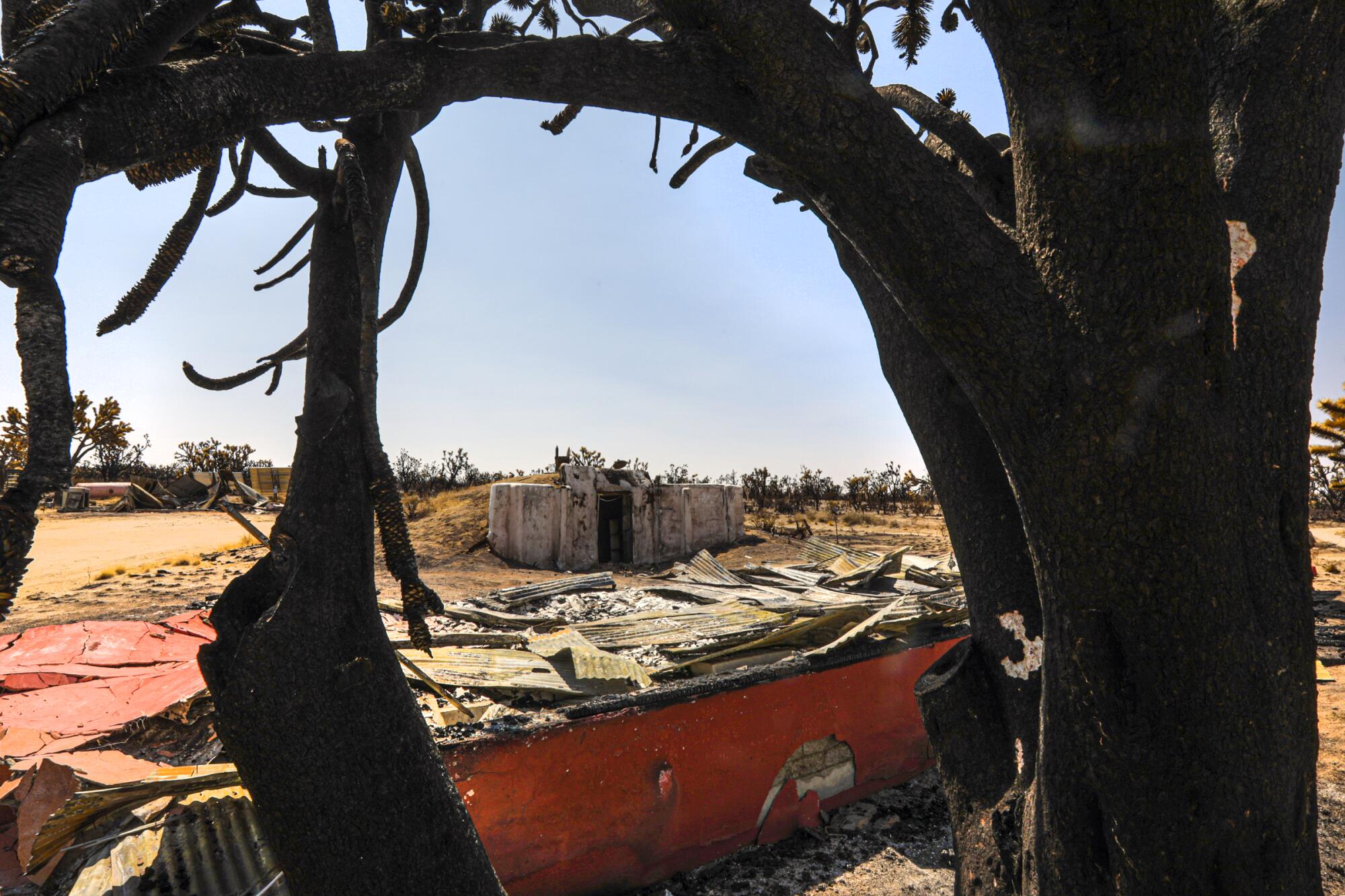
The fire burned more than 1.3 million Joshua trees, an old adobe bunkhouse at Valley View Ranch and a historic ranch house and outbuildings at Kessler Springs Ranch.
âIt could have been a lot worse,â said preserve superintendent Mike Gauthier, noting that vast expanses of the Joshua tree woodland were untouched.
Preserve botanist Drew Kaiser estimated that about a quarter of the sprawling Cima Dome Joshua tree forest â which extends beyond the preserve boundaries north of Interstate 15 â was destroyed.
But that quarter is a place that some desert lovers call one of their favorite spots on the planet.
âI lost the center of my world last week. Iâm feeling a kind of vertigo of the soul,â Chris Clarke of the National Parks Conservation Assn. wrote in a blog post in the fireâs aftermath.
Many of Californiaâs largest wildfires have been started by dry lightning strikes
He recounted how he had camped on the dome for more than two decades, shedding the stress of urban life and personal problems while stars paraded across the desert sky.
âThereâs something about that landscape that taps into something really primal with people,â Esque said. âI get a rush when I see it.â
It will be âa little bit scary,â he added, to see the fireâs devastation firsthand when he checks his research plots.
Although the Cima Dome forest is known as the worldâs largest Joshua tree woodland, Esque and another researcher have documented a bigger stand and a thicker one elsewhere in the Mojave.
The dome forest nonetheless stands out for its size and a density that preserve scientists suspect may not be wholly natural.
âThis dense Joshua tree forest might actually be an artifact of cattle grazing,â Hughson said.
She cites two photographs that were taken in the same spot. There are no Joshua trees in the first one, from the early 1900s. There are many in the 2000 photo.
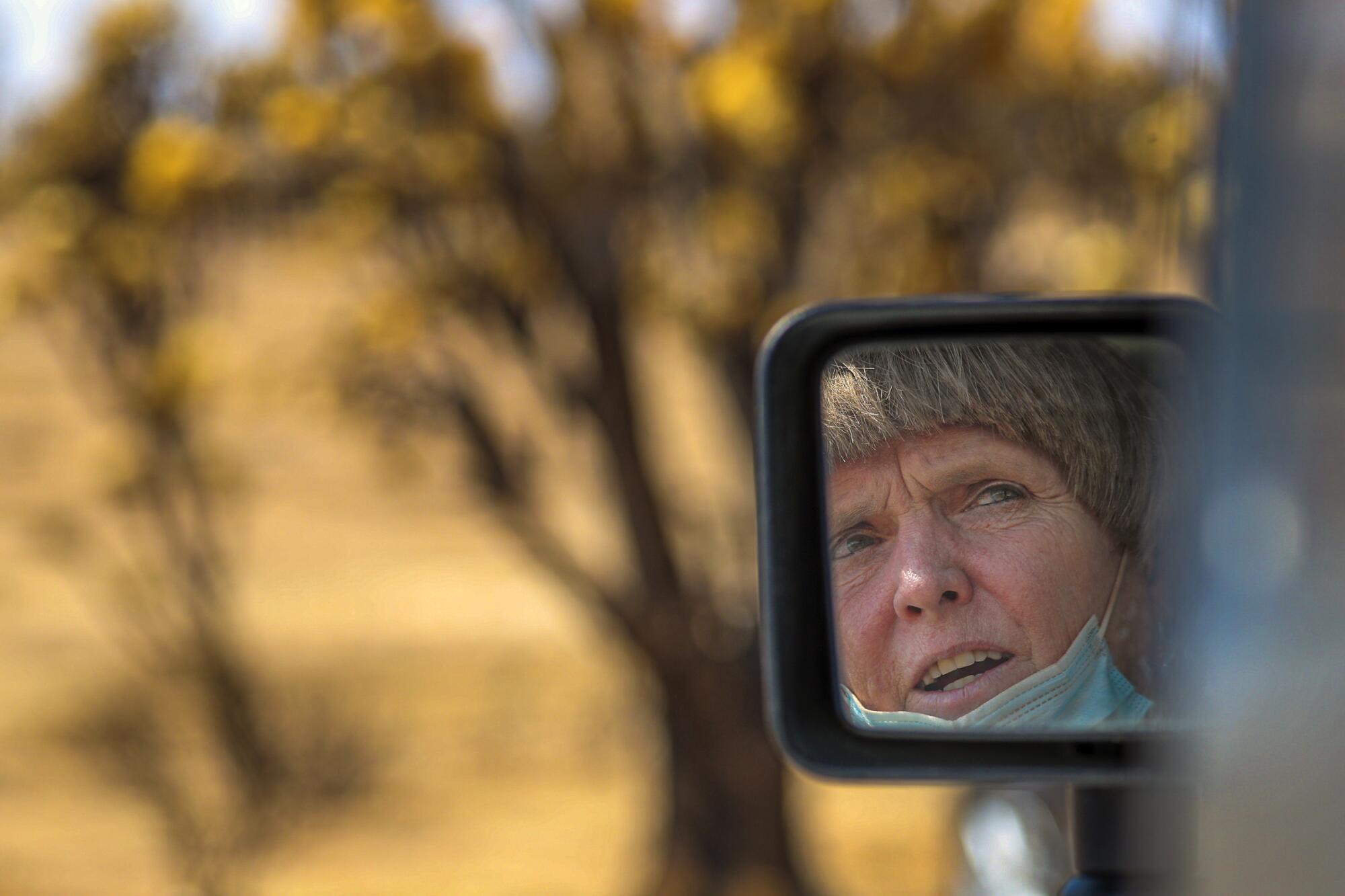
Cattle grazing, which started in the area in the late 1800s and continued until after the preserve was established by the 1994 California Desert Protection Act, left a lasting mark on the desert.
Hooves disturbed the soil. What the animals liked or didnât like to eat changed the vegetation. Seeds of alien annual grasses that were deliberately and accidentally introduced by settlers hitched rides on cattle who carried them across the range.
On the dome, cattle munched on native perennial bunch grasses but left native blackbrush, one of the desertâs most flammable plants, alone. Blackbrush also acts as an important nursery plant for Joshua tree seeds by shading them and hiding them from hungry rodents.
In that way, preserve scientists theorize that cattle grazing helped create the domeâs unusually thick Joshua tree stands â but also set the stage for last monthâs conflagration.
Hughson and Kaiser donât have early accounts to prove it, but they believe that grazing changed the dome from a more open savanna of native grasses studded with big old Joshua trees to a dense Joshua woodland that was undergrown by a mixture of native shrubs, bunch grasses and invasive red brome.
âThe fire would not have burned so hot had it not been overgrazed and didnât have an increased fuel load,â Kaiser said.
A less intense fire would have been less disastrous. As it is, of the estimated 1.33 million burned Joshua trees, Kaiser says fewer than 200,000 are topped by green leaves and have any chance of survival.
âThe Joshua tree forest was not sustainable,â Hughson said.
Now, she added, âwhat we are afraid of and want to avoidâ is seeing the charred desert floor turn into a permanent carpet of red brome that fuels more and more fire.
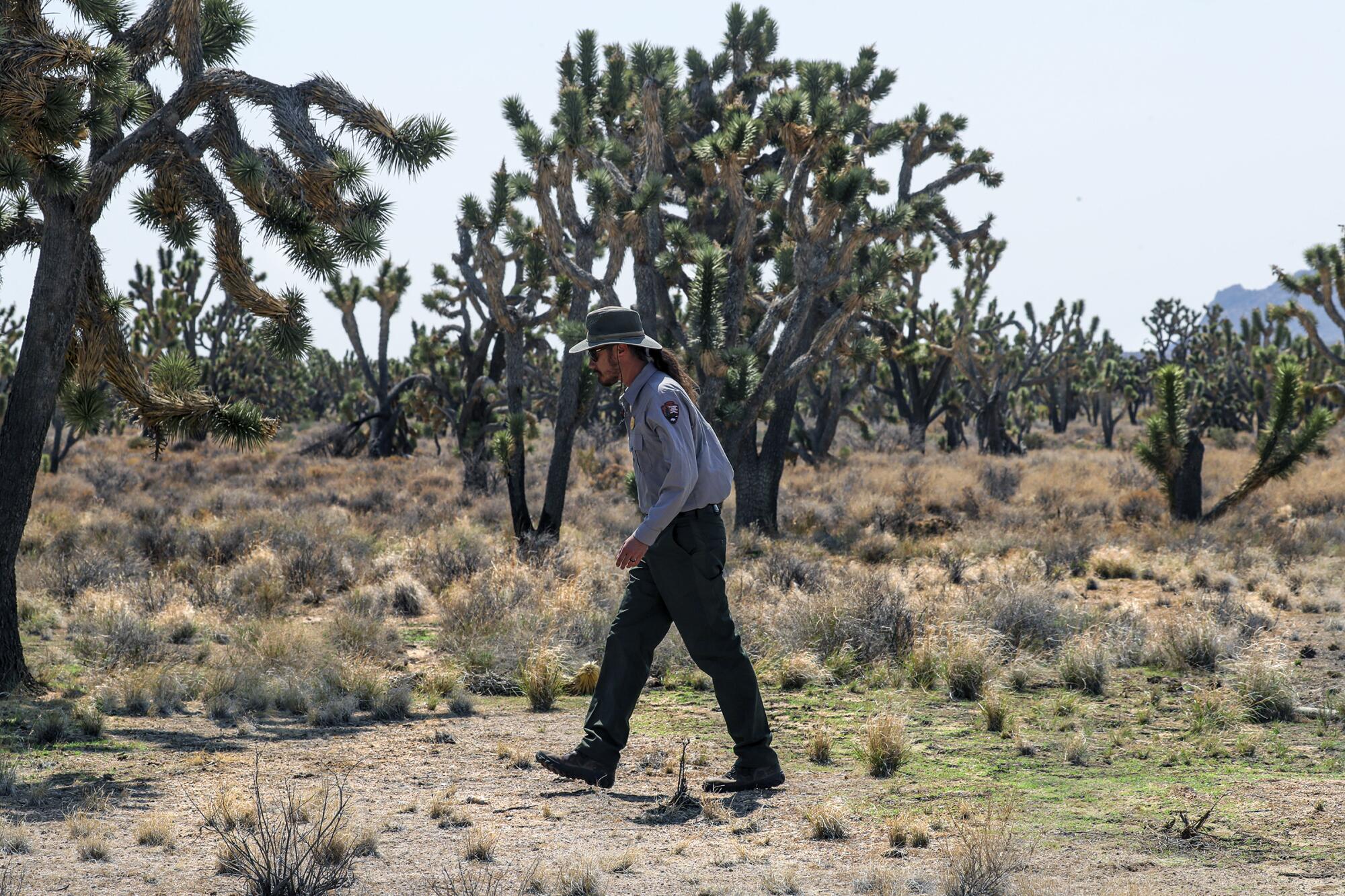
Kaiser stood among piles of ash â all that was left of incinerated Joshua trees and yuccas in an area where the blaze was especially hot, consuming the vegetation and even the root systems of native grasses and shrubs.
âThis is the area Iâm most concerned about,â he said. But he spied a little patch of hope: a small unburned spot with cholla, blackbrush and Mormon tea.
It was a place where the preserve could plant a few baby Joshua trees and hope they survived long enough to produce seeds that rodents would cache, slowly seeding the surrounding area.
Recovery plans will focus on doing small Joshua tree plantings in selected areas and keeping the red brome from running wild, Kaiser said.
âI know there has been a lot of heartbreak and distress and people want it to come back. But we donât create artificial gardens,â he said. âWe restore the ecological processes that drive the native vegetation.â
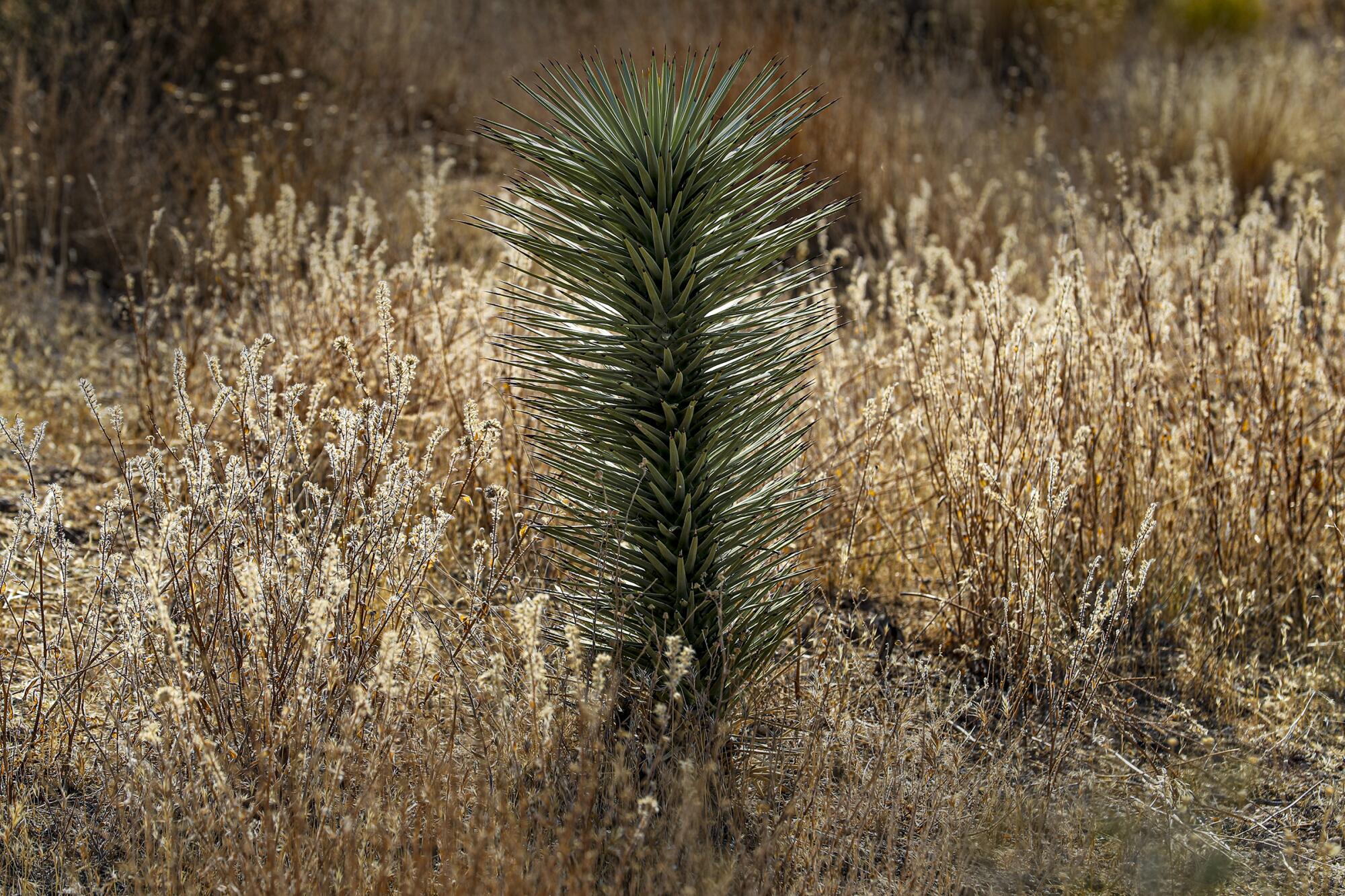
Regardless, Joshua tree restoration efforts are very much in the experimental stages and have yet to succeed on a large scale. Seeds blow away in the wind or get eaten by rodents. Plantings have to be watered for the first couple of years and caged to protect them from nibbling rabbits. A few years of drought can kill youngsters.
âThe environmental conditions that have to line up for a Joshua tree to make it are somewhat remarkable,â Esque said.
Fortunately, the vast majority of the Dome burn was of moderate severity, leaving the root systems of many native shrubs and grasses intact.
With some luck, Kaiser said, next year nature will launch its own recovery as big galleta, black grama and other native perennial grasses start poking through the ashen ground. Resprouting banana yucca, paper bag bush, California buckwheat and other natives will follow, keeping the red brome in check. Wood rats and mice will spread Joshua tree seeds from unburned patches.
But more fire and drought could abort that rebirth. Meanwhile, global warming is shrinking the range of Joshua trees and accentuating the swings between wet years that produce bumper crops of grassy invaders and drought that stresses the natives.
âWhere is this going and what is the new state we can expect to be in?â Hughson wondered.
Still, she said, âweâre not going to give up.â
